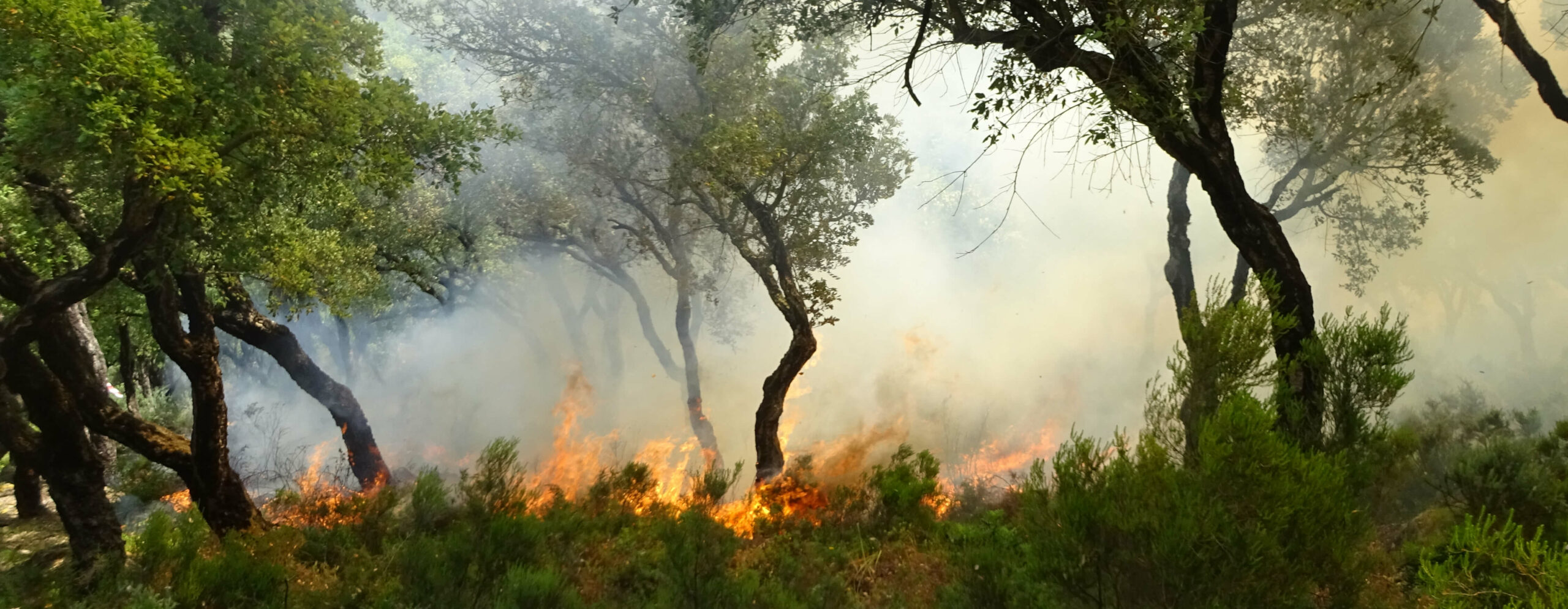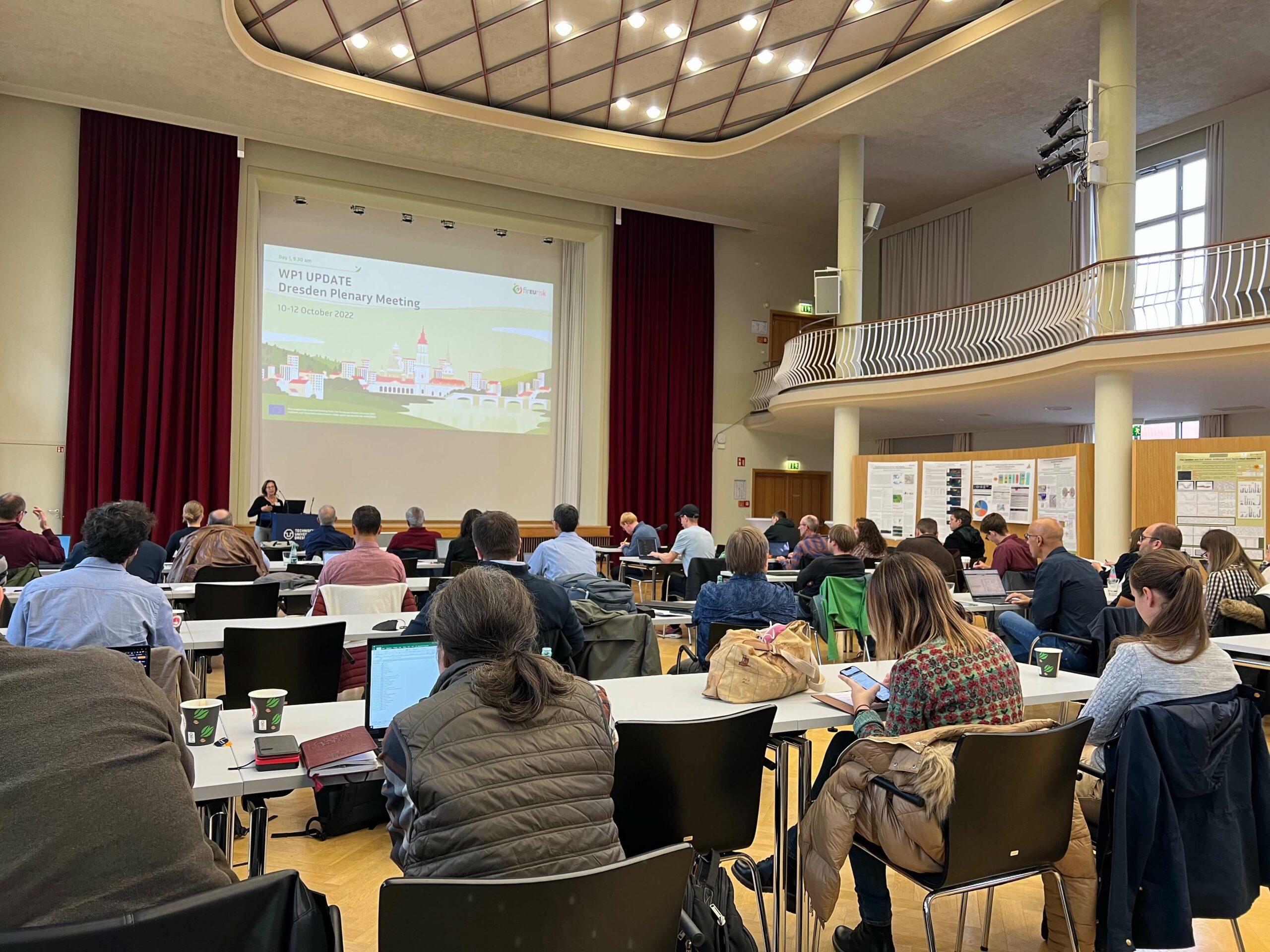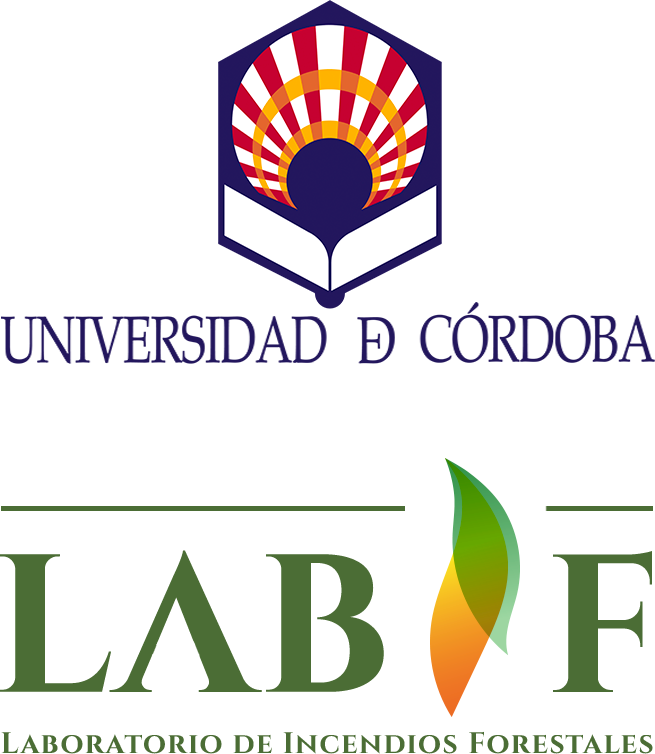Laboratorio de Incendios Forestales
Publicaciones Científicas
A continuación, se referencian las publicaciones científicas más destacadas de los miembros del LABIF en los últimos años. Todos aquellos interesados en disponer de un mayor nivel de detalle de alguna de las publicaciones pueden ponerse en contacto con los autores de estos.

- Molina J.R., Ortega M., Rodríguez y Silva F., 2022. Scorch height and volume modeling in prescribed fires: effects of canopy gaps in Pinus pinaster stands in Southern Europe. Forest Ecology and Management 506, 119979. Link.
- Molina J.R., Ortega M., Rodríguez y Silva F., 2022. Fire ignition patterns to manage prescribed fire behavior: application to mediterranean pine forests. Journal of Environmental Management, 114052. Link.
- Ferrer A., Sánchez P., Borrego C., Jiménez J.A., Rodríguez y Silva F., 2022. Estimation of moisture in live fuels in the mediterranean: Linear regressions and random forests. Journal of Environmental Mangement 322(10), 116069. Link..
- Molina J.R., Ortega M., Rodríguez y Silva F., 2021. Useful life of prescribed fires in southern Mediterranean Basin. An application to Pinus pinaster stands in Sierra Morena Range. Forests 12, 486. Link.
- Molina J.R., Rodríguez y Silva F., Heras J. (Eds.), 2021. Fire vulnerability and prevention and suppression effectiveness under ongoing global change. Environmental Research and Public Health. Link.
- Ferrer A., Rodríguez y Silva F., 2021. Fuel Modelling Characterisation Using Low-Density LiDAR in the Mediterranean: An Application to a Natural Protected Area. Forests 12(8), 1011. Link.
- De Lima T., Aleixo J.A., Villanova R., Gallo R., Hakamada R.E., Ferreira M.V., Molina-Martínez J.R., Herrera M.A., Muir J.P., Caraciolo R.L., 2021. Structure, survival, and species diversity in a tropical dry forest submitted to coppicing. Forest Ecology and Management 501, 119700.
- Salim S.C., Pezzopane J.E., Da Silva G.F., Ferreira R.L., Martínez J.R.M., Machuca M.A.H.,2021. Species–environment interaction in the interior and on the edge of a semi-deciduous seasonal forest fragment. Journal of Tropical Forest Science 33, 444-454.
- Rodríguez y Silva F., O´Connor C.D., Thompson M., Molina J.R., Calkin D., 2020. Modelling suppression difficulty: current and future applications. International Journal of Wildland Fire 29(8) 739-751. Link.
- Wunder S., Calkin D., Charlton V., Feder S., Martinez de Arano I., Moore P., Rodríguez y Silva F., Tacconi L., Vega C., 2021. Resilient landscapes to prevent catastrophic forest fires: Socioeconomic insights towards a new paradigm. Forest Policy and Economics 128, 102458.
- Molina J.R., González-Cabán, Rodríguez y Silva F., 2019. Potential Effects of Climate Change on Fire Behavior, Economic Susceptibility and Suppression Costs in Mediterranean Ecosystems: Córdoba Province, Spain. Forests 10, 679. Link.
- Molina J.R., González-Cabán, Rodríguez y Silva F., 2019. Wildfires impact on the economic susceptibility of recreation activities: Application in a Mediterranean protected area. Journal of Environmental Management 245, 454-463.
- Molina J.R., Lora A., Prades C., Rodríguez y Silva F., 2019. Roadside vegetation planning and conservation: new approach to prevent and mitigate wildfires based on fire ignition potential. Forest Ecology and Management 444, 163-173.
- Molina J.R., Zamora R., Rodríguez y Silva F., 2019. The role of flagship species in the economic valuation of fire impacts: an application to two mediterranean protected areas. Science of the Total Environment 675, 520-530.
- Moreno N., Moreno R., Molina J.R., 2019. Optimal harvest cycle on Nothofagus forests including carbon storage in Southern America: An application to Chilean subsidies in temperate forests. Land Use Policy 81, 705-713.
- Molina J.R., Herrera M.A., Rodríguez y Silva F., 2019. Wildfire-induced reduction in the carbon storage of Mediterranean ecosystems: an application to brush and forest fires impacts assessment. Environmental Impact Assessment Review 76, 88-97.
- Bonilla S., Estrella A., Molina J.R., Herrera M.A., 2018. Socioecological system and potential deforestation in western amazon forest landscapes. Science of the Total Environment 644, 1044-1055.
- Molina J.R., Prades C., Lora A., Rodríguez y Silva F., 2018. Quercus suber cork as a keystone trait for fire response: A Flammability Analysis Using Bench And Field Scales. Forest Ecology and Management 429, 384-393.
- Molina J.R., Moreno R., Castillo M., Rodríguez y Silva F., 2018. Economic susceptibility of fire-prone landscapes in natural protected areas of the southern Andean Range. Science of the Total Environment 619-620, 1557-1565.
- Molina J.R., García J.P., Fernández J.J., Rodríguez y Silva F., 2018. Prescribed fire experiences on crop residue removal for biomass exploitations. Application to the maritime pine forests in the Mediterranean Basin. Science of the Total Environment 612, 63-70.
- Moreno R., Molina J.R., Herrera M.A., Salvador N., Zamora R., 2018. Habitat modeling for the family of rhinocryptids in the rain forest in the south of Chile. Arvore 41, 1-7.
- Molina J.R., Moreno N., Moreno R., 2017. Influence of fire regime on forest structure and restoration of a native forest type in the Southern Andean Range. Ecological Engineering 102, 390-396.
- Molina J.R., Rodríguez y Silva F., Herrera M.A., 2017. Economic vulnerability of fire-prone landscapes in protected natural areas: application in a mediterranean natural park. European Journal of Forest Research 136, 609-624.
- Rodríguez y Silva F., Guijarro M., Madrigal J., Jiménez E., Molina J.R., Hernando C., Vélez R., Vega J.A., 2017. Assessment of crown fire initiation and spread models in mediterranean conifer forests by using data from field and laboratory experiments. Forest Systems 102, 1-24.
- Molina J.R., Martin T., Rodríguez y Silva F., Herrera M.A., 2017. The ignition index based on flammability of vegetation improves planning in the wildland-urban interface: a case study in Southern Spain. Landscape Urban and Planning 158, 129-138.
- Vega E., Molina J.R., Barron V., Rodríguez y Silva F., Del Campillo M.C., Sánchez-Rodríguez A., 2023. Spatio-temporal assessment of soil properties immediately and eight months after a high intensity-controlled burn in the south of Spain. Science of the Total Environment 898, 165368. https://doi.org/10.1016/j.scitotenv.2023.165368.
- Madrigal J., Rodríguez De Rivera O., Carrillo C., Guijarro M., Hernando C., Vega J.A., Martín-Pinto P., Molina J.R., Fernández C., Espinosa J., 2023. Empirical modelling of stem cambium heating caused by prescribed burning in mediterranean pine forest. Fire 6(11), 430. https://doi.org/10.3390/fire6110430.
- Chuvieco E., Yebra M., Sammartino S., Thonicke K., Gómez-Giménez M., San-Miguel J., Oom D., Velea R., Mouillot F., Molina J.R., Miranda A.I., Lopes D., Salis M., Bugaric M., Sofiev M., Kadantsev E., Gitas I.Z., Stavrakoudis D., Eftychidis G., Bar-Massada A., Neidermeier A., Pampanoni V., Pettinari, L., Arrogante F., Ochoa C., Moreira B., Viegas, X.D., 2023. Towards an integrated approach to wildfire risk assessment: when, where, what and how may the landscapes burn. Fire 6(5), 215. https://doi.org/10.3390/fire6050215.
- Castillo M., Molina J.R., Rodríguez y Silva F., García-Chevesich P., Garfias R., 2017. A system to evaluate fire impacts from simulated fire behavior in mediterranean areas of Central Chile. Science of The Total Environment 579: 1410-1418.
- Thompson M., Rodríguez y Silva F., Calkin D., Hand M.S., 2017. A review of challenges to determining and demonstrating efficiency of large fire management. International Journal of Wildland Fire 26 (7), 562-573.
- Molina J.R., Rodríguez y Silva F., Herrera M.A., 2016. Integrating economic landscape valuation into mediterranean territorial planning. Environmental Science & Policy 56, 120-128.
- Rodríguez y Silva F., González-Cabán A., 2016.Contribution of suppression difficulty and lessons learned in forecasting fire suppression operations productivity: a methodological approach. Journal of Forest Economics 25, 149–159.
- Molina J.R., Martín M.A., Drake F., Martín L.M., Herrera M.A., 2015. Fragmentation in Araucaria araucana forests in chile: quantification and correlation with structural variables. IForest 9, 244-255.
- Rodríguez y Silva F., Castillo M., 2015. Determining response times for the deployment of terrestrial resources for fighting forest fires: A case study: Mediterranean – Chile. Ciencia e Investigación Agraria 42, 97-107.
- Molina J.R., Rodríguez y Silva F., Mérida E., Herrera M.A., 2014. Modelling available crown fuel for Pinus pinaster Ait. stands in the “Cazorla, Segura and Las Villas Natural Park” (Spain). Journal of Environmental Management 144, 26-33.
- Martín M.A., Mattioni C., Lusini I., Molina J.R., Cherubini M., Drake F., Herrera M.A., Villani F., Martin L.M., 2014. Título: New insights into the genetic structure of Araucaria araucana forests based on molecular and historic evidences. Tree Genetics & Genomes. doi: 10.1007/s11295-014-0725-1.
- Rodríguez y Silva F., Molina J.R., González-Cabán A., 2014. A methodology for determining operational priorities for prevention and supression of wildland fires. International Journal of Wildland Fire 23(4), 544-554.
- Bonilla S., Molina J.R., Pezzopane J.E., Herrera M.A., 2014. Fragmentation patterns and systematic transitions of the forested landscape in the upper Amazon region, Ecuador 1990-2008. Journal of Forestry Research 25(2), 301-309.
- Muñoz F., Uribe M., Martín M.A., Molina J.R., Herrera M.A., Álvarez J.B., Martín L.M., 2013. Composición, estructura y diversidad de poblaciones de Nothofagus glauca ubicadas en la zona mediterránea de Chile. Gayana Botanica 70(1), 82-91.
- Castillo M., Molina J.R., Rodríguez y Silva F., Julio G., 2013. A territorial fire vulnerability model for mediterranean ecosystems in South America. Ecological Informatics 13, 106-113.
- Rodríguez y Silva F., 2013. Pinsapares e incendios forestales, antecedentes históricos, modelización de la combustibilidad y gestión preventiva. En: (Quintanilla J.,Coord.). Los pinsapares en Andalucia (Abies pinsapo Boiss.): conservación y sostenibilidad en el siglo XXI. Junta de Andalucía-Universidad de Córdoba. ISBN 9788499271378, 357-370.
- Rodríguez y Silva F., Molina J.R., 2012. Modeling mediterranean forest fuels by integrating field data and mapping tools. European Journal of Forest Research 131, 571-582.
- Martin A., Mattioni C., Molina J.R., Alvarez J.B., Cherubini M., Herrera M.A., Villani F., Martin L.M., 2012. Landscape genetic structure of chestnut (Castanea sativa mill.) In Spain. Tree Genetics & Genomes 8, 127-136.
- Rodríguez y Silva F., Molina J.R.,González-Caban A., Herrera M.A., 2012. Economic vulnerability of timber resources to forest fires. Journal of Environmental Management 100, 16-21.
- Drake F., Molina J.R., Herrera M.A., 2012. An ecophysiographic approach for araucaria araucana regeneration management. Ciencia e Investigación Agraria 39, 159-176.
- Moreno R., Molina J.R., Zamora R., Herrera M.A., 2011. Predictive modelling of microhabitat for endemic bird in South Chilean temperate forests using maximum entropy (MAXENT). Ecological Informatics 6, 364-370.
- Molina J.R., Herrera M.A., Zamora R., Rodríguez y Silva F., González-Cabán A., 2011. Economic losses to iberian swine production from forest fires. Forest Policy and Economics 13, 614-621.
- Molina J.R., Rodríguez y Silva F., Herrera M.A., 2011. Potential crown fire behaviour in pinus pinea stands following different fuel treatments. Forest Systems 20, 266-277.
- Chuvieco E., Aguado I., Yebra M., Nieto H., Salas J., Martín P., Villar L., Martínez J., Martín S., Ibarra P., De La Riva J., Baeza J., Rodríguez y Silva F., Molina-Martínez J.R., Herrera M.A., Zamora R., 2010. Development a framework for risk assessment using remote sensing and geographic information system. Ecological Modelling 221, 46-58.
- Zamora R., Molina-Martínez J.R., Herrera M.A., Rodriguez y Silva, F., 2010. A model for wildfire prevention planning in game resources. Ecological Modelling 221, 19-26.
- Rodríguez y Silva F., González-Cabán A., 2010. ‘SINAMI’: a tool for the economic evaluation of forest fire management programs in Mediterranean ecosystems. International Journal of Wildland Fire 19 (7), 927-936.
- Souza-Alonso P., Omil B., Sotelino A., García-Romero D., Otero-Urtaza E., Moledo M.L., Reyes O., Rodríguez J.C., Madrigal J., Moya D., Molina J.R., Rodríguez y Silva F., Merino A., 2024. Service-learning to improve training, knowledge transfer and awareness in forest fire management. Fire Ecology. https://doi.org/10.1186/s42408-023-00226-y.
- Moreno R., Zamora R., Moreno N., Esse C., Molina J.R., 2024. Identification of main variables in forest management for recovery of endemic species habitat in burned areas of southern Chile. Southern Forests: a Journal of Forest Science 86(2), 141–151. https://doi.org/10.2989/20702620.2024.2325984
- Ortega M., Navarro J.A., Molina J.R., 2023. Modeling wind adjustment factor for a prescribed burn plan. An application to Mediterranean stands in Southern Europe. Agricultural and Forest Meteorology 342(15), 109748. https://doi.org/10.1016/j.agrformet.2023.109748.
- Ortega M., Rodríguez y Silva F., Molina J.R., 2023. Fireline production rate of handcrews in wildfires of the Spanish Mediterranean Region. International Journal of Wildland Fire32(11), 1503–1514. doi:10.1071/WF22087.
- Madrigal J., Molina J.R., Marino E. (Eds.), 2023. Integrated vulnerability of forest systems to wildfire: implications on forest management tools. Fire. MDPI, Suiza. https://www.mdpi.com/journal/fire/special_issues/U9X242Z98Z.
- Ghermandi L., Bento A., Alcasena F., González S., Molina J.R., 2023. Wildfires in the wildland-urban interface: applied research for fire prevention and hazard reduction. Frontiers in Forests and Global Change. Suiza.https://www.frontiersin.org/research-topics/60438/wildfires-in-the-wildland-urban-interface-applied-research-for-fire-prevention-and-hazard-reduction.
- Castillo M., Molina J.R., Bonilla S., Moreno R., 2022. Calculating minimum safety distance against wildfires at the wildland-urban interface in Chile and Spain. Heliyon 8(11), e11238. https://doi.org/10.1016/j.heliyon.2022.e11238.
Últimas entradas
Proyectos
Lorem ipsum dolor sit amet, consectetur adipiscing elit. Pellentesque vestibulum aliquam cursus. Mauris molestie aliquam urna. Curabitur nec eleifend risus. Integer eget libero sed elit pharetra ultricies eu in augue.
El proyecto INTERREG-FIREPOCTEP+ es un proyecto europeo que busca soluciones, estratégicas y de gestión que contribuyan a hacer los paisajes de “La Raya”
El proyecto Mejora de la resiliencia a los incendios de los bosques mediterráneos (ENFIRES) es un proyecto competitivo de la Convocatoria 2020
El proyecto FirEUrisk de la Unión Europea (H2020) tiene por objeto el desarrollo de una estrategia de gestión actualizada del riesgo de




